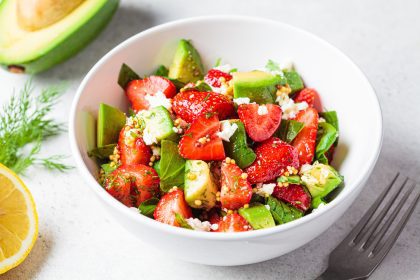The endless cycle of restrictive dieting followed by inevitable rebound eating has left countless people frustrated and confused about how to maintain healthy eating patterns. Traditional diet approaches often create unsustainable restrictions that trigger psychological reactions leading to overeating, guilt, and abandonment of healthy intentions.
Smart eating represents a fundamentally different approach that focuses on building sustainable habits rather than following temporary rules. This philosophy recognizes that lasting nutritional improvements come through gradual lifestyle adjustments that feel natural and enjoyable rather than punitive or restrictive.
The human brain responds positively to gentle, consistent changes while often rebelling against dramatic restrictions or sudden lifestyle overhauls. Working with these natural psychological patterns creates lasting success where forceful approaches typically fail within weeks or months.
Modern life presents numerous obstacles to consistent healthy eating, from busy schedules and convenience food marketing to social pressures and emotional stress responses. However, strategic habit formation can overcome these challenges by making beneficial choices easier and more automatic than less healthy alternatives.
Understanding how small environmental changes, timing adjustments, and mindful approaches can dramatically improve nutritional outcomes empowers people to take control of their eating patterns without feeling deprived or restricted. These methods work by enhancing natural body wisdom rather than overriding it through willpower alone.
The psychology behind sustainable eating changes
Successful long-term eating improvements require working with rather than against natural human psychology and biology. The brain develops eating patterns through repeated experiences, creating automatic responses that operate below conscious awareness much of the time.
Habit formation occurs through consistent repetition in specific contexts, gradually shifting behaviors from conscious decisions requiring willpower to automatic responses that feel natural and effortless. This process takes time but creates lasting change that doesn’t require ongoing mental energy to maintain.
Environmental influences play crucial roles in eating decisions, with food availability, visual cues, and social contexts often determining choices more than conscious intentions. Recognizing and strategically modifying these environmental factors creates supportive conditions for better eating without relying solely on self-control.
Emotional eating patterns develop when food becomes associated with comfort, stress relief, celebration, or other psychological needs. Addressing these underlying patterns through alternative coping strategies prevents the cycle of restriction followed by emotional overconsumption that characterizes failed diet attempts.
1. Strategic meal timing that works with natural rhythms
Eating patterns that align with circadian rhythms and natural hunger cycles support better digestion, energy levels, and appetite regulation without requiring calorie counting or food restrictions. This approach leverages the body’s natural timing preferences to optimize metabolic function.
Morning meals that include protein and healthy fats provide sustained energy while preventing mid-morning crashes that often lead to poor snack choices. Starting the day with balanced nutrition sets positive patterns that continue throughout remaining meals and snacks.
Afternoon timing adjustments can prevent the common energy slump that triggers cravings for high-sugar, high-caffeine foods. Eating lunch early enough to allow proper digestion while planning for a small afternoon snack maintains steady blood sugar levels throughout the day.
Evening meal timing affects both sleep quality and next-day appetite patterns. Finishing dinner at least three hours before bedtime allows for proper digestion while preventing late-night snacking that often involves less nutritious choices made when willpower is naturally lower.
Weekend schedule consistency helps maintain the beneficial patterns established during weekdays, preventing the Monday restart cycle that disrupts progress. Flexible consistency allows for social occasions while maintaining overall timing patterns that support healthy choices.
2. Portion awareness without measuring or restricting
Understanding natural portion sizes helps regulate intake without the tedious measuring and calculating required by traditional diet approaches. Visual cues and hunger awareness provide sustainable guides for appropriate eating amounts.
Hand measurements offer portable portion guides that adjust automatically to individual body sizes. A palm-sized portion of protein, a cupped handful of carbohydrates, and a thumb-sized portion of fats provide reasonable starting points for balanced meals.
Plate composition strategies create visual balance that naturally moderates portions while ensuring nutritional variety. Filling half the plate with vegetables, one quarter with protein, and one quarter with whole grains creates satisfying meals with appropriate proportions.
Hunger and fullness awareness requires practice but provides the most accurate guide for individual needs. Learning to recognize subtle hunger cues and stopping at comfortable fullness prevents both undereating that leads to later overeating and overeating that causes discomfort.
Eating pace modifications allow natural satiety signals time to register before overconsumption occurs. Putting utensils down between bites, chewing thoroughly, and engaging in conversation during meals naturally slow eating speed to match digestion timing.
3. Mindful eating practices that enhance satisfaction
Bringing conscious attention to eating experiences increases satisfaction while naturally moderating consumption. Mindful eating transforms meals from mindless fuel consumption into enjoyable, nourishing experiences that satisfy both physical and psychological needs.
Eliminating distractions during meals allows full attention to food flavors, textures, and satisfaction levels. Turning off screens, putting away phones, and focusing solely on eating enhances awareness of hunger and fullness cues while increasing meal enjoyment.
Gratitude practices before meals create positive associations with food while encouraging thoughtful food choices. Taking a moment to appreciate the effort involved in food production and preparation fosters respect for nourishment that naturally leads to more conscious eating.
Sensory engagement through smell, visual appreciation, and texture awareness enhances satisfaction levels, often leading to contentment with smaller portions. When eating becomes a full sensory experience, the body registers satisfaction more quickly and completely.
Emotional check-ins before eating help distinguish between physical hunger and emotional needs, preventing food from becoming the primary solution for non-hunger related issues. This awareness allows for more appropriate responses to different types of needs.
4. Strategic food environment modifications
Creating supportive food environments makes healthy choices easier while removing temptations that require ongoing willpower to resist. Environmental design principles can dramatically improve eating patterns without requiring constant conscious decision-making.
Kitchen organization that places nutritious options at eye level and within easy reach while storing less healthy options in less convenient locations naturally guides better choices. This approach works with human tendency to choose convenient options during busy or tired moments.
Workplace strategies might include keeping healthy snacks visible while storing treat foods out of sight, bringing satisfying lunches to avoid relying on available options, and staying hydrated to prevent mistaking thirst for hunger during busy work periods.
Social environment considerations involve communicating food preferences to friends and family, suggesting restaurants with healthy options, and having strategies for social eating situations that don’t require avoiding gatherings or feeling deprived during celebrations.
Shopping habits that focus on perimeter sections of grocery stores where fresh foods are typically located, making lists based on planned meals, and avoiding shopping when hungry help ensure that healthy options are available at home when needed.
5. Hydration strategies that support natural appetite regulation
Proper hydration affects hunger signals, energy levels, and food satisfaction in ways that significantly impact eating patterns. Many people mistake thirst for hunger, leading to unnecessary snacking when water would better address the body’s actual needs.
Morning hydration upon waking helps jumpstart metabolism while preventing the sluggishness that often leads to reaching for stimulating foods like excessive caffeine or sugar. Starting each day with water creates a foundation for better choices throughout remaining hours.
Pre-meal water consumption can enhance satiety and prevent overeating while supporting proper digestion. Drinking water 20-30 minutes before meals allows time for hydration benefits without diluting digestive enzymes during eating.
Afternoon hydration prevents the energy slump that commonly triggers cravings for quick-energy foods. Often, mid-afternoon fatigue stems from dehydration rather than true hunger, making water a more appropriate solution than snacking.
Flavored water options like herbal teas, water with lemon, or sparkling water with fruit can satisfy desires for interesting flavors while maintaining hydration goals. These alternatives prevent relying solely on flavored beverages that may contain added sugars or artificial ingredients.
6. Meal preparation approaches that reduce decision fatigue
Planning and preparing meals in advance eliminates the daily decisions that often default to less healthy convenience options when time is limited or energy is low. This strategy works by making good choices the easiest available option during busy moments.
Batch cooking proteins, grains, and chopped vegetables on less busy days creates building blocks for quick, healthy meals throughout the week. Having these components ready makes assembling nutritious meals faster than ordering takeout or preparing processed convenience foods.
Theme-based meal planning reduces decision-making while ensuring variety. Designating specific themes like “Meatless Monday” or “Fish Friday” provides structure while allowing flexibility within each category based on preferences and available ingredients.
Freezer meal preparation during motivated periods provides backup options for challenging days when cooking feels overwhelming. Having homemade frozen meals available prevents relying on processed alternatives while still accommodating realistic energy levels.
Kitchen tool investments like slow cookers, pressure cookers, or quality storage containers can streamline meal preparation processes, making healthy eating more convenient than less nutritious alternatives that might otherwise seem more appealing due to convenience factors.
7. Nutritional density focus without calorie counting
Emphasizing foods that provide maximum nutritional value per bite naturally improves diet quality while maintaining satisfaction and energy levels. This approach prioritizes nourishment over restriction, leading to better overall nutrition without feelings of deprivation.
Vegetable variety challenges can make increasing nutritional density feel like an adventure rather than a chore. Trying new vegetables, preparation methods, or ethnic cuisines expands options while improving nutrient intake through diverse plant foods.
Protein quality considerations focus on sources that provide complete amino acid profiles along with additional nutrients. Fish, eggs, legumes, and lean meats offer more nutritional complexity than processed protein sources while supporting satiety and muscle maintenance.
Whole grain transitions from refined grain products provide more fiber, vitamins, and minerals while offering sustained energy that prevents blood sugar crashes leading to cravings. Making gradual switches allows taste preferences to adapt naturally.
Healthy fat inclusion from sources like avocados, nuts, seeds, and olive oil supports absorption of fat-soluble vitamins while providing satiety that prevents overeating. These foods add flavor and satisfaction that make meals more enjoyable and filling.
8. Flexible structure that accommodates real life
Creating eating patterns that can adapt to varying schedules, social obligations, and energy levels prevents the all-or-nothing thinking that often derails health efforts. Flexible approaches accommodate human nature while maintaining beneficial overall patterns.
Weekend adjustments allow for social eating and relaxation while maintaining weekday structure. Having different strategies for different types of days prevents weekend indulgences from completely disrupting beneficial weekday patterns.
Travel and dining out strategies help maintain healthy choices away from home without missing social opportunities or feeling restricted during special occasions. Researching options in advance and having backup plans prevents decision-making under pressure.
Stress eating alternatives provide specific strategies for challenging emotional periods when food often becomes a primary coping mechanism. Having non-food comfort strategies available prevents temporary stress from creating lasting habit disruptions.
Recovery protocols for when healthy patterns get disrupted help return to beneficial habits quickly without guilt or perfectionist thinking that can lead to extended periods of poor choices. Viewing temporary disruptions as normal rather than failures maintains long-term progress.
9. Social eating navigation without isolation
Maintaining healthy eating patterns while participating in social activities requires strategies that honor both health goals and relationship priorities. Isolation from social eating can create unsustainable approaches that eventually lead to abandoning health efforts entirely.
Communication strategies with friends and family about health goals can create supportive environments where healthy choices are respected and accommodated. Most people want to support loved ones’ health efforts when they understand the importance and specific needs involved.
Restaurant navigation skills include reviewing menus in advance, asking about preparation methods, and making modifications when needed while maintaining positive social interactions. These skills become easier with practice and prevent social eating from derailing health efforts.
Potluck and party strategies might involve bringing a healthy dish to share, eating a small meal before attending, or focusing on socializing rather than eating as the primary activity. These approaches maintain social connections while supporting health goals.
Holiday and celebration balance allows for enjoying special occasions without completely abandoning healthy patterns. Having specific strategies for special events prevents them from becoming extended periods of poor eating that require major effort to overcome.
10. Progressive habit building for lasting change
Sustainable eating improvements develop through gradual habit formation rather than dramatic lifestyle overhauls that often prove unsustainable. Progressive approaches build on small successes while preventing the overwhelm that leads to abandoning efforts entirely.
Single-change focus involves implementing one new habit at a time until it becomes automatic before adding additional changes. This approach prevents overwhelming the system while ensuring that each new habit becomes properly established before moving forward.
Habit stacking connects new eating behaviors to existing routines, making them easier to remember and implement consistently. For example, taking vitamins with morning coffee or eating an apple before checking afternoon email creates automatic connections.
Progress tracking through simple methods like noting energy levels, mood, or general wellbeing provides motivation while avoiding obsessive monitoring that can become counterproductive. Focusing on how healthy choices feel rather than numerical measurements maintains positive associations.
Patience with the process recognizes that lasting change takes time while celebrating small improvements along the way. Understanding that habit formation is gradual prevents discouragement during the adjustment period while building confidence through accumulated small successes.
Smart eating represents a sustainable alternative to restrictive dieting that honors both health goals and human psychology. By implementing these strategies gradually and consistently, anyone can improve their nutritional patterns without feeling deprived or restricted.
The key to success lies in recognizing that lasting change comes through patient habit formation rather than dramatic restrictions that require ongoing willpower to maintain. These approaches work with natural human tendencies rather than fighting against them, creating lasting improvements that enhance both health and quality of life.

















